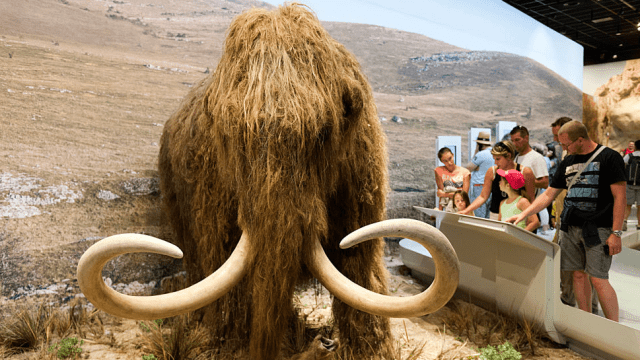Nature is governed by order. Species rise, and then they fall. Everything happens as it’s supposed to, and nature thrives when left to its own devices. But add humans into the mix, and things get a little bit strange. For CRISPR startup Colossal, that strangeness comes in the form of new woolly mammoth hybrid creatures which could be born as early as 2027.
Research into genetic engineering has gone on for decades, with breakthrough technologies like CRISPR-Cas9 gene editing opening up new possibilities for nature. While many of the CRISPR-led projects have been theoretical so far, it does appear we’re getting closer to a future where CRISPR could be used to permanently alter nature at a genetic level.
Colossal is just one team working in the space, but their plans are grander than most and could come to fruition within the next six years. Using CRISPR-based gene editing, the team is currently working towards creating woolly mammoth hybrids using artificial wombs and historic genetic material. The plan isn’t to create pure woolly mammoths, but to splice woolly mammoth genetics onto endangered elephants.
In theory, this splicing would allow the elephants to gain “cold-adapted traits” like smaller ears and greater body fat which could protect them in colder months and increase their life span overall.
[related_content first=”1725047″]
“Our true North Star is a successful restoration of the woolly mammoth, but also its successful rewilding into interbreeding herds in the Arctic,” Ben Lamm, Colossal co-founder and chief executive told CNET of the project.
The overall goal is to help the planet with CRISPR technology by strengthening endangered species and protecting the biodiversity of the planet.
The company has already raised $US15 million ($20 million) for the project, and Lamm told CNET the company plans to create “large-scale herds” of the hybrid woolly mammoth elephants to help stabilise the species and preserve the genetic legacy of Asia’s dwindling elephant population.
The rhinoceros was also targeted as a candidate for help in the future, but it appears Colossal is focussing on its elephant-led future for now. Over the next four to six years, the company is planning on birthing its first hybrid creatures, with long-term plans for rewilding dependent on early successes and financial support.
Interestingly, the company said it wasn’t planning a ‘tourist destination’ à la Jurassic Park but did note it was interested in a theoretical ‘rewilding site’ in north Russia known as Pleistocene Park. This location was created by scientist Sergey A. Zimov as a means to study woolly mammoths and recreate their grazing grounds as they existed in the Pleistocene epoch.
In theory, the genetic hybrids would exist in this park to maintain the ideal conditions for their survival — and this could, in theory, become a visiting ground for humans.
For now, Colossal’s CRISPR aspirations are still in the planning phases, but given the planned 2027 time frame, we could see significant leaps forward over the next few years.
Whether genetic engineering should be applied to historical species is a debate that will likely rage on throughout Colossal’s development period but regardless, its work in the space will be fascinating to watch.
